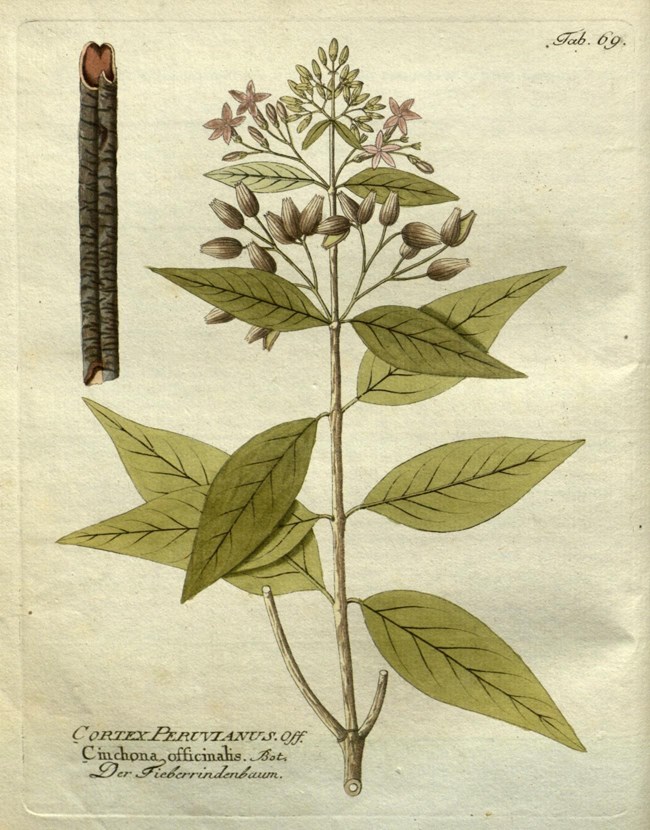Last updated: September 5, 2023
Article
Medicine on the Lewis and Clark Expedition

Biodiversity Heritage Library digitization of Phil. Jos. Schalbaecher in "Icones plantarum: medico-oeconomico-technologicarum cum earum fructus ususque descriptione," published in 1800. Flickr
Medical knowledge in the early 1800s was limited. Bloodletting was common. People believed laxatives and purgatives removed contagions from the body.
Dr. Benjamin Rush was the leading physician in the United States at the time. Meriwether Lewis met with him in Philadelphia in the summer of 1803. Dr. Rush gave Lewis limited medical instruction and provided him with some 600 of “Rush’s Bilious Pills,” also called “Rush’s Thunderbolts.” The pills contained calomel, a solution of mercurous chloride, and jalap, both common purgatives of the era. During the journey, the captains administered the pills almost as a cure-all. William Clark remarked, “in maney instancis I have found extreamly efficacious in fevers which are in any measure Caused by the presence of boil.” They used the pills so frequently that modern scientists have been able to identify places the expedition camped by testing the level of mercury found in the soil.
In addition to Rush’s pills, the expedition’s medicine chest contained many other common treatments of the era. They brought a large container of Peruvian bark for general use. The mantra seemed to be, when in doubt, use Peruvian bark. Lewis mixed the bark with saltpeter to treat snake bites. He even used it on his own gunshot wound in August 1806.
Supply lists provide a glimpse of the other medicines they brought. Opium and laudanum served as pain relievers. They used camphor to combat fever. To treat venereal disease, a common ailment within the military, they used balsam of copaiba in combination with calomel, a mercury solution. They also brought essence of peppermint to help with stomach complaints. In August 1805, for example, Peter Weiser was “very ill with a fit of the cholic.” Lewis administered “a doze of the essence of Peppermint and laudinum which in the course of half an hour so far recovered him that he was enabled to ride my horse and I proceeded on foot and rejoined the party.”
Given their limited training in even the basics of contemporary medical science, it is noteworthy that Lewis and Clark were able to treat the many illnesses and injuries their crew suffered. On more than one occasion, sheer good luck may have been the deciding factor between recovery or death.
About this article: This article is part of series called “Pivotal Places: Stories from the Lewis and Clark National Historic Trail.”
